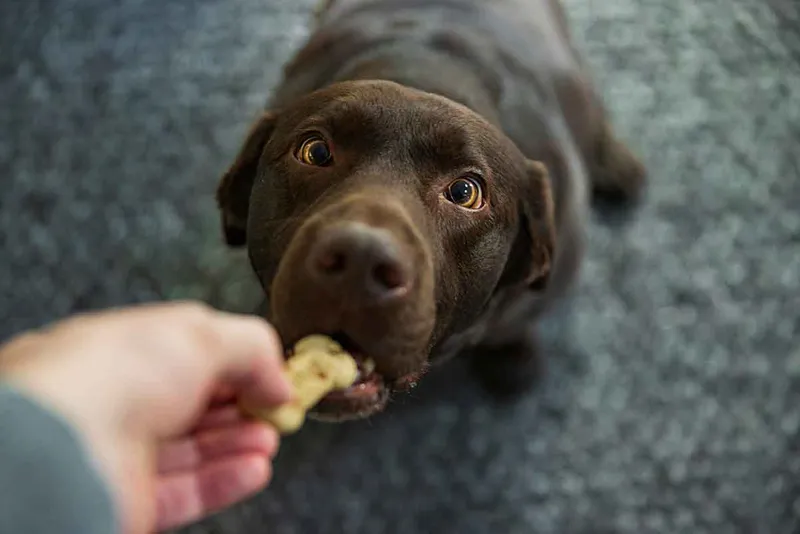You won’t find the word ‘love’ in the published papers of scientists who research non-human animals. Ironically, though, most animal behaviour scientists were drawn to the subject because of their deep and abiding interest in them.
And yet, generations of researchers have been trained not to use anthropomorphic words like ‘love’ to describe something a non-human animal might be feeling. Indeed, the use of anthropomorphism (descriptions of non-human behaviour or characteristics with terminology used to describe humans) has long been condemned in the field of animal behaviour. Hence, researchers talk of ‘temperament’ instead of ‘personality’ and ‘positive cognitive bias’ instead of ‘optimism’.
This hard-line stance against the applicability of human terms to nonhumans is loosening, however. Partly for the usefulness of some of the terms for describing animal behaviour, but also for the strong evolutionary reasons to believe that non-human animals are not entirely dissimilar to humans.
What is clear to anyone who observes dogs’ behaviour is that dogs are hopelessly fond of us. We could call it ‘hypersociable’ or ‘socially preoccupied’; we could call it ‘excessively affectionate’. Or we could call it loving.
Even so, another puzzle has arisen: how does one recognise an anthropomorphic concept like ‘love’? In other words, what are the defining behaviours or neurological features of love that one might look for in a species without the verbal capacity to say, “Yes, I feel love.”
So far, the answers have come in terms of behavioural measures (what dogs do that looks like love) and physiological measures (how their bodies change in ways similar to our bodily changes when we’re besotted).
If you live with dogs, you may have heard of – or are experiencing – separation anxiety: distressed, anxious and sometimes destructive behaviour a dog performs in your absence. This disorder is really an exaggerated form of attachment, a word first used to describe the relationship between mother and child.
Tests for attachment involve monitoring a child (or dog’s) behaviour when separated from the mother: distress at separation and calming at reunion indicates attachment. This bonding is part of the process of developing a loving relationship: that such occurs in dog-human relationships (even in a disorderly way) looks like the same thing.
One strain of research looks at dogs’ sensitivity to our emotional states, such as coming close when we’re crying or upset. This behaviour looks like an expression of love, too, although it remains uncertain whether they’re trying to console us or just worried about the unusual hormones and sounds we’re making.
Read more:
- Puppy love: How science explains our special bond with dogs
- Why your brain thinks this puppy is undoubtedly cuter than a baby

On the other hand, some behaviours that look loving, such as a greeting ‘kiss’, are just as likely to be a vestigial behaviour as an expression of affection.
Dogs‘ closest ancestors, wolves, greet packmates returning from a hunt with such ‘kisses’: a greeting, yes, but also a request for the hunter to regurgitate some of the bison they just consumed.
Physiologically, research that might speak to whether dogs love us comes from looking at their heart rates, hormones and brains. In one small study involving dog-human pairs who were especially bonded, researchers gave both dog and person heart rate monitors, separated them briefly, and then reunited the pairs.
On reunion, the heart rate of both dog and person dropped, and the drops even appeared to be aligned – two hearts beating as one.
Similarly, you may have heard of a hormone called oxytocin. Oxytocin is a neuropeptide: a kind of compound that acts on the brain. And it’s one with a special role for humans: it’s held to be the neurological reason parents bond with their infants.
Dog researchers have found that oxytocin plays a role in the dog-person bond, too. Just by gazing at each other, rates of oxytocin rise in dogs and in their person. The stronger the bond you have, the more of an effect we find. In fact, just being with their person can cause a dog’s oxytocin level to rise.
There’s no specific section of the brain that is singularly active when looking at, or thinking about, someone we love, but fMRI imaging of some dogs’ brains shows activity in a reward centre – the ventral caudate – both when looking at something they loved (hot dogs) and when hearing the praising voice of their person. It’s not a home run, but, at a minimum, it shows they view us as at least as desirable as processed meats. That said, they’re no dummies.
In a typical dog-human relationship, as we’ve defined it, the human is the one in charge of the food and the dog must wait, patiently or not, for us to dole it out. Dogs are very good at making associations, so it doesn't take them long to associate you with the food you deliver. Far from being manipulative, the dog who does your bidding for a treat is just being savvy.
Read more:
